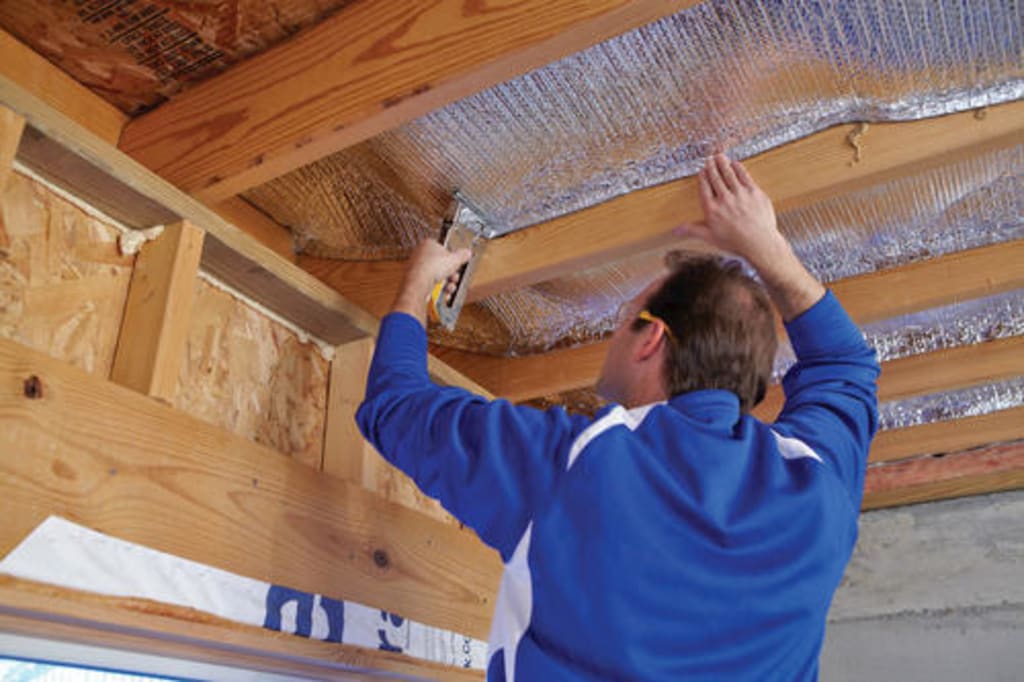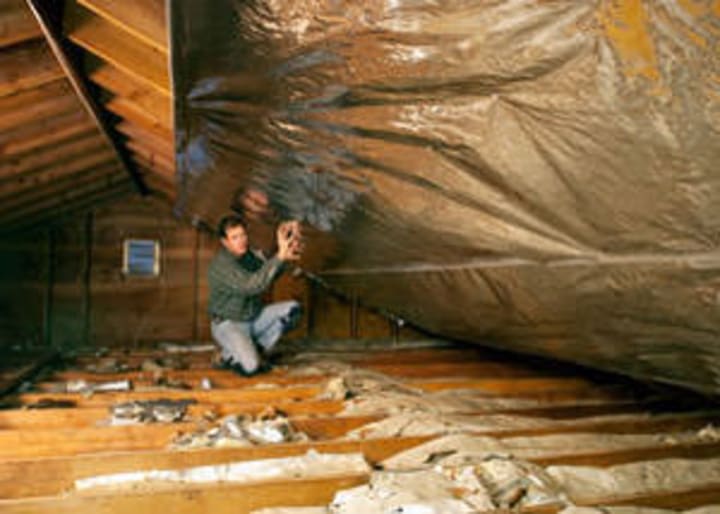How Effective Is a Reflective Radiant Barrier?
Hansen Pole Buildings has probably sold many square feet of reflective radiant barrier. We don't sell it on the premise of being an end all for...

Hansen Pole Buildings has probably sold many square feet of reflective radiant barrier. We don't sell it on the premise of being an end all for insulating purposes, but rather as an efficient condensation control barrier.
Reflective Radiant Barrier Promoted as a way for reducing cooling costs by mitigating solar heat gain through walls and attics, these shiny (typically aluminum) surfaces have as many detractors as proponents. The dispute isn't about the science of radiant-heat transmission; it’s whether applying this science to your roof will make a difference on your utility bill.
Heat energy is moved through buildings (and everything) in three ways: by moving (when objects touch), by convection (by ventilation), and by radiation (by means of electromagnetic waves through an airspace or vacuum). Insulation, thermal breaks, and air-sealing prevent conduction and convection; radiant barriers prevent heat transfer through radiation only.
Emissivity (or emittance) measures what proportion energy a cloth emits. It’s rated on a scale from 0 to 1; the lower the worth, the less energy emitted. Radiant barriers by definition have an emissivity of 0.1 or less, emitting 10% or less of the energy striking them.
Are they Radiating or Reflecting?
Both, actually. Surfaces which are highly reflective to long-wave (heat) energy also are low-emitting. Aluminum, for instance, reflects 97% of the long-wave radiation which hits it, emitting 3% into the airspace on the opposite side. Remember, though, we’re talking about invisible, long-wave radiation—not light. White paint, for instance, does an excellent job of reflecting light but a poor job of blocking long-wave heat transfer. The key point is this: a cloth can look reflective and not be an honest radiant barrier, and an honest radiant barrier will work whether or not the shiny side is facing the warmth source—as long because it is facing an airspace.

The present study supports the bright barrier of the attic as an effective strategy to reduce the cold burden in hot climates. This reduction, however, is restricted to solar gain from the attic—about 22% of a home’s cooling load. So albeit research has found radiant barriers can deflect 40% of incoming attic heat, internet savings represents only 8% to 10% of a building’s total cooling costs.
The benefit is even sketchier in northern homes, where summer heat gain is a smaller amount of a priority and therefore the barriers may limit beneficial winter solar gain. Although radiant barriers may help to retain winter heat, most winter heat loss through attics is thanks to convection (rising air), not radiation—making proper insulation and air-sealing much more effective.
How Radiant Barriers Work.
Because radiation occurs in an airspace, radiant barriers won’t work unless they face an airspace. Pressed between two surfaces, a bright barrier becomes heat conductive. Additionally, because heat moves toward cold, there also must be a difference in temperature between materials. Bright barriers, then nude facilities in well-insulated buildings.
Vented attics are often good places for radiant barriers because they contain large airspaces and take the brunt of solar-heat gain. Because walls are subject to less solar gain and since heat transfer through them relies more on conduction and convection than radiation, radiant barriers in walls provide less benefit. Although barriers placed on attic floors can work, surface dust will eventually hinder performance.
In a new vented attic, radiant-barrier sheathing are often used, or a foil barrier are often draped over the rafters or trusses before sheathing is installed. Within the second example, the airspace created within the rafter bays enhances the foil’s effect by increasing ventilation.
Radiant-barrier foil are often attached to the rafter sides (below) or to the faces (top). The latter method curtails heat transfer through the rafters and is preferred. In both cases, gaps at the highest and bottom promote ventilation. Double-sided foil provides alittle increase in effectiveness.
When all is claimed and done, a properly installed reflective radiant barrier makes for an excellent vapor barrier and any heating and cooling savings achieved is simply another bonus!
About the Creator
Nancy Thigpen
I am Nancy and welcome. I am an individual who is positive about every aspect of life. There are many things I prefer to try to do, to see, and to experience. I prefer to read, I prefer to write; I prefer to think, I prefer to concentrate.
Enjoyed the story? Support the Creator.
Subscribe for free to receive all their stories in your feed. You could also pledge your support or give them a one-off tip, letting them know you appreciate their work.






Comments
There are no comments for this story
Be the first to respond and start the conversation.